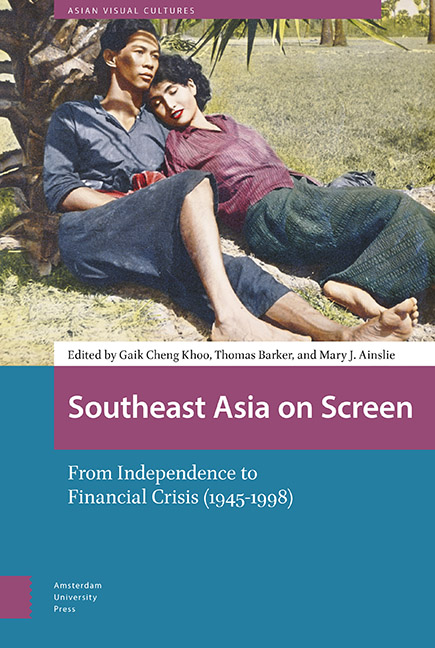Book contents
- Frontmatter
- Contents
- List of Illustrations
- Introduction: Southeast Asia on Screen: From Independence to Financial Crisis (1945–1998)
- Section 1 Independence and Post-World War II Filmmaking: Nation-building, Modernity and Golden Eras
- Section 2 Key Directors
- Section 3 Popular Pleasures
- About the Authors
- Index
7 - Hussain Haniff and the Place of the Auteur in Popular Malay Cinema
Published online by Cambridge University Press: 20 November 2020
- Frontmatter
- Contents
- List of Illustrations
- Introduction: Southeast Asia on Screen: From Independence to Financial Crisis (1945–1998)
- Section 1 Independence and Post-World War II Filmmaking: Nation-building, Modernity and Golden Eras
- Section 2 Key Directors
- Section 3 Popular Pleasures
- About the Authors
- Index
Summary
Abstract
This chapter re-examines ideas of authorship in the Malay cinema through a case study of one of its most prestigious filmmakers, Hussain Haniff. It considers the formation of Hussain's reputation by reviewing the changing critical attitudes to his work and discusses his films as instances of personal and political expression, but also as contributions to a popular entertainment industry. Hussain offered timely explorations of tradition, modernity and gender, and used the period's generic conventions and stars to shape his unique visions. By positioning Hussain within the broader world of film entertainment, this chapter contributes to a more historically grounded perspective on the role played by film directors during the golden age of Malay cinema.
Keywords: Hussain Haniff, authorship, Malay cinema, P. Ramlee
In histories of the ‘golden age’ of Malay cinema, which lasted from the late 1940s to the early 1970s, Hussain Haniff is often cast as the period's second most important filmmaker, after P. Ramlee, whose phenomenal popularity, both during his career and in the present day, makes him a largely uncontested figure at the top of the Malay filmmaking pantheon. Ramlee and Hussain worked for opposing studios in Singapore: Malay Film Productions, which was owned by the Shaw Brothers and was where Ramlee worked before he moved to Merdeka Studios in Kuala Lumpur in 1964, and Cathay-Keris, where Hussain spent his whole career. These were vertically integrated studios, complete with their own production facilities, including contracted personnel and stars, and their own distribution networks and cinema chains. The two studios also shaped the identities of the two directors, with Ramlee working for the more financially successful of the two, and thus adopting a more central place in the period's film culture, and Hussain belonging to the less prominent studio, which contributed to his adoption of an ‘outsider’ status. While the Malay cinema of the late 1940s to the early 1970s is viewed as a ‘golden age’ because of the high quality of films produced and the sheer volume of production (over 400 films were made), it was also a golden age in terms of cinema attendance, something both the Singaporean and Malaysian cinemas have struggled to attain ever since.
- Type
- Chapter
- Information
- Southeast Asia on ScreenFrom Independence to Financial Crisis (1945–1998), pp. 153 - 170Publisher: Amsterdam University PressPrint publication year: 2020

